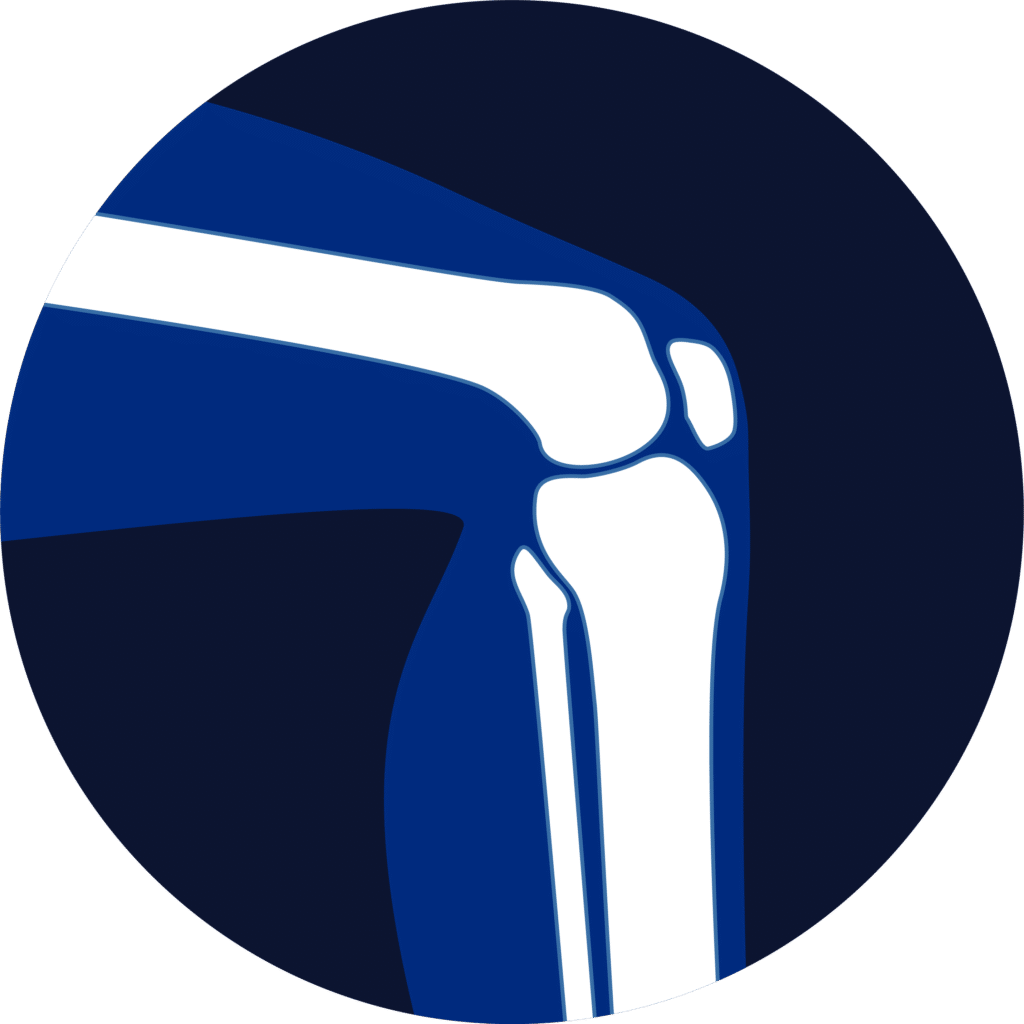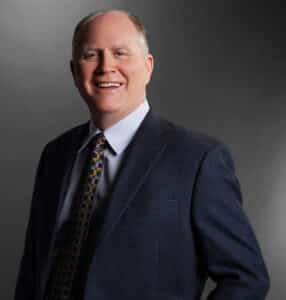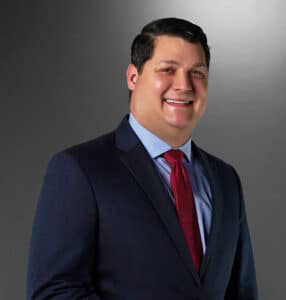Knee pain can be caused by a wide range of conditions including tendinitis, bursitis, arthritis, ligament sprains, and fractures. Learn more about types of pain, its causes, symptoms, and treatments.

Knee pain can be caused by a variety of conditions, ranging from chronic medical issues such as arthritis and gout to more acute injuries like ACL tears or meniscus tears. Osteoarthritis is one of the most common forms of arthritis and is a form of wear and tear affecting the joint cartilage and surrounding tissue. With age, this cartilage becomes thinner, and the bones rub against each other resulting in pain and swelling. Other causes of knee pain are meniscus tears, in which the meniscus (the cushioning layer between two bones) becomes torn or damaged due to trauma or overuse. A dislocated kneecap often results from trauma or fall, causing intense pain when attempting to move the joint normally.
When it comes to symptoms, knee pain can vary greatly depending on its cause but typically it presents with visible swelling in and around the joint, stiffness when moving it in certain directions, tenderness when pushing on the area around it, redness due to increased blood flow, warmth due to inflammation and popping or clicking noises when attempting to move it.
Depending on the severity, treatments for knee pain range in complexity. Physical therapy can also help alleviate symptoms by strengthening weakened muscles that support the knee joint and increase flexibility so that movement does not worsen existing inflammation. Alternative options may be recommended in severe cases when other treatments have failed to relieve severe knee pain. When battling knee discomfort, call Victoria Orthopedic Center to schedule an appointment.
The knee joint comprises three major bones: the femur, tibia, and patella, which are held together by ligaments, tendons, and cartilage to enable a range of complex motions such as flexion, extension, rotation, and circumduction.
If this joint is damaged, it can be painful and limit the range of motion. Treatment for knee trauma involves a diagnostic procedure to determine the degree of injury and its appropriate treatment plan. Conservative treatment options might include physical therapy or braces use; however, if any damage severely affects the patient’s quality of life, surgery may be proposed as an option and the quickest way to a healthy recovery.
Surgery is followed by rehabilitation to properly recover from a knee surgery procedure with the goal of regaining full range movement in the knee with no pain. Additionally, it is always advised to carefully plan a safe return to sporting activities or any physical activity following the procedure.
Patellofemoral Instability is a condition in which the patella (kneecap) is not held securely by the thigh muscles, ligaments, and tendons, causing excessive movement of the knee joint, which can lead to chronic pain, instability and disability.
Pain when moving the knee can be caused when the patella bone is dislocated from the trochlear groove. Doctors will evaluate the source of instability through physical examination to determine treatment options.
Non-surgical treatments are recommended when the patella is partially dislocated and include pain medications, a knee brace, or orthotics. However, if the knee cap is completely dislocated, surgery treatments may be recommended to realign the knee. Those who undergo surgical treatment for patellofemoral instability will be instructed by doctors on necessary post-operative care measures to ensure a full recovery. Patients notice a difference in knee mobility and reduced pain in the knee cap after recovering from treatment.
Knee Arthroscopy is a valuable procedure doctors can use to diagnose and treat various problems within the knee joint. The minimally invasive technique involves passing an arthroscope, which is essentially a camera attached to a tube, through one or more small incisions to provide doctors with a clear view of the knee joint. With this technique, doctors being able to identify the problem and make repairs or treatment decisions.
Recovery times can vary greatly depending on the degree of knee trauma and surgical measures. Treatment options will typically change from person to person, depending on their pain levels and diagnosis. Nevertheless, patients who follow post-operative care regain comfort and strength in the knee.
Meniscal tears are a common knee injury that can cause pain, swelling, and reduced range of motion in the joint, as well as instability due to the loss of cushioning and support between the knee bones.
A meniscal tear can be a very painful and uncomfortable experience, with symptoms such as swelling, reduced range of motion in the affected joint, and instability due to the erosion of cushioning between the bones. A doctor will diagnose a meniscal tear with physical tests and imaging techniques like X-rays and MRI scans. In some cases, conservative treatment starts with rest and ice to reduce inflammation.
Depending on the severity of the injury, doctors can recommend surgery to properly reattach or remove torn parts of the cartilage. Post-surgery, such as physical therapy, can aid in proper recovery and help regain strength, mobility and stability.
The ACL Reconstruction Hamstring Method is a minimally invasive surgical procedure wherein the patient’s own hamstring tendon is used to reconstruct the anterior cruciate ligament in order to restore knee stability and function, allowing them to return to their pre-injury state as quickly as possible and with a high rate of successful outcomes.
Through proper medical evaluation and diagnosis, doctors have plenty of options at their disposal when deciding on a course of action. With thoughtful attention and care, doctors can ensure swift and successful long-term recovery for injured patients treated with ACL Reconstruction Hamstring Method. While the recovery time for ACL reconstruction is longer than other injuries, patients improved range of motion and comfort in their lower legs.
Multiligament Knee Construction is a complex surgical technique involving the reconstruction of multiple ligaments in the knee joint with tissue and tendon grafts from other areas of the body, allowing for improved stability and better range of motion post-operatively.
This treatment option is usually only recommended after doctors have made a thorough diagnosis and explored less invasive options for healing. Although the recovery process can be challenging, patients tend to experience significant improvement in their ability to move after successfully completing multi-ligament knee construction.
Posterior Cruciate Ligament Reconstruction is used to reconstruct a torn or otherwise damaged posterior cruciate ligament (PCL), which is a major stabilizing ligament of the knee joint, typically following trauma or injury.
Depending on patient symptoms, there are various degrees of surgical treatment for PCL. Doctors may proceed with diagnostic tests such as X-rays or MRI scans. The injury grade of the knee will help doctors navigate the degree of surgical operations.
In most cases, the reconstruction process typically involves doctors making a few small incisions to replace the injured or removed tissue with new tissue. Once completed, doctors do recommend that patients rest during their recovery period so they can achieve optimal health outcomes and minimize any risks of further injury. Patients who go through with this procedure restore freedom of movement and reduced swelling in the knee.
Medial Collateral Ligament Reconstruction is a surgical procedure that involves replacing or repairing torn or damaged ligaments in the knee joint with new ligaments, usually obtained from tissue harvested from elsewhere in the body, to restore stability and allow for improved movement.
An accurate diagnosis through physical examination is made by doctors before treatment begins; the options for reconstructing the ligaments vary depending on the extent and complexity of tissue damage. In cases where doctors detect instability in the medial collateral ligament, they may recommend surgery. During this procedure, doctors replace or repair the existing ligaments with new ones, usually gathered from other parts of the body.
After the surgical procedure, doctors often prescribe physical therapy to improve strength and flexibility as part of post-operative care during recovery. Patients experience a full recovery, improved comfort, and reduced stress in the knee area.
Total Knee Replacement is a type of surgery that involves replacing the damaged or worn out parts of the knee joint with artificial implants, thereby relieving pain caused by arthritis, injury or other medical conditions and restoring function to the joint for improved mobility and quality of life.
Doctors will perform tests such as a physical examination for proper diagnosis before surgery, and there are several treatment options available depending on the severity of the issue. Surgical procedure involves doctors replacing the worn-out components of the knee with artificial implants. A successful operation requires extensive post-operative care, which includes physical therapy and meditation along with other simple exercises in order to ensure a full and speedy recovery.
Ultimately, Total Knee Replacement surgery has been helpful to a variety of patients in improving their long-term health and well-being.
Uni Knee Replacement is an advanced, minimally invasive knee replacement procedure that utilizes the latest medical technology and cutting-edge surgical techniques to provide superior patient outcomes, allowing for faster recovery times, reduced pain and scarring, and improved range of motion and mobility.
Uni Knee Replacement consistently provides more successful long-term results for those suffering from arthritis or other knee ailments than traditional treatments have in the past.
Revision knee replacement is a surgical procedure to replace an existing total knee joint replacement with a new one due to complications from wear, loosening, infection, or fracture of components in the original implant.
Implemented with cutting-edge surgical techniques alongside the most advanced medical technology, this procedure provides treatment options for an accurate diagnosis, faster recovery times and reduced pain and scarring. Most notably, the advanced treatment produces better results in terms of range of motion and mobility.
© 2024 Victoria Orthopedic Center, all rights reserved.
Built and Powered by ThriveFuel Marketing..

Comittees Held:
Specializes In:

Comittees Held:
Specializes In:

Comittees Held:
Specializes In: